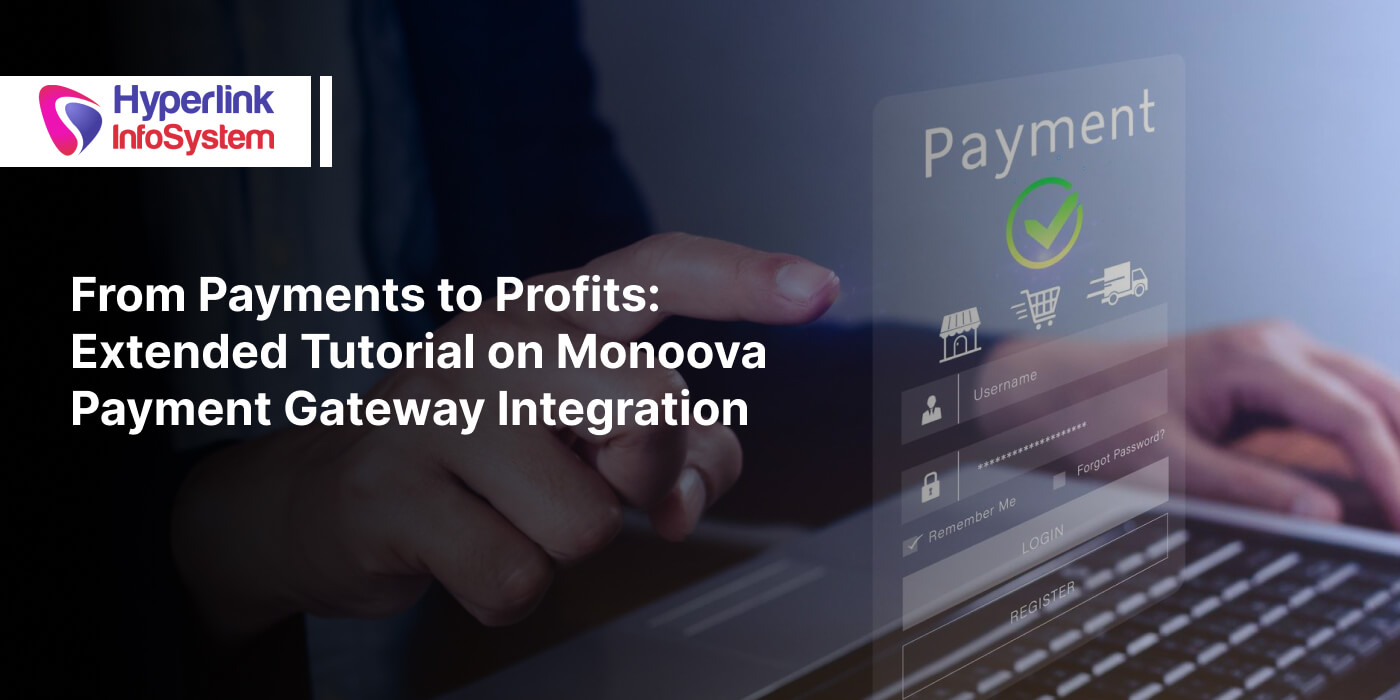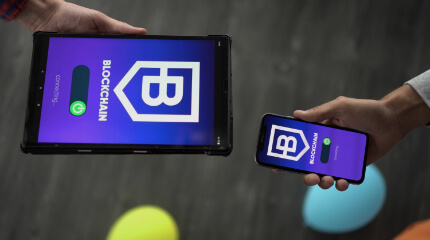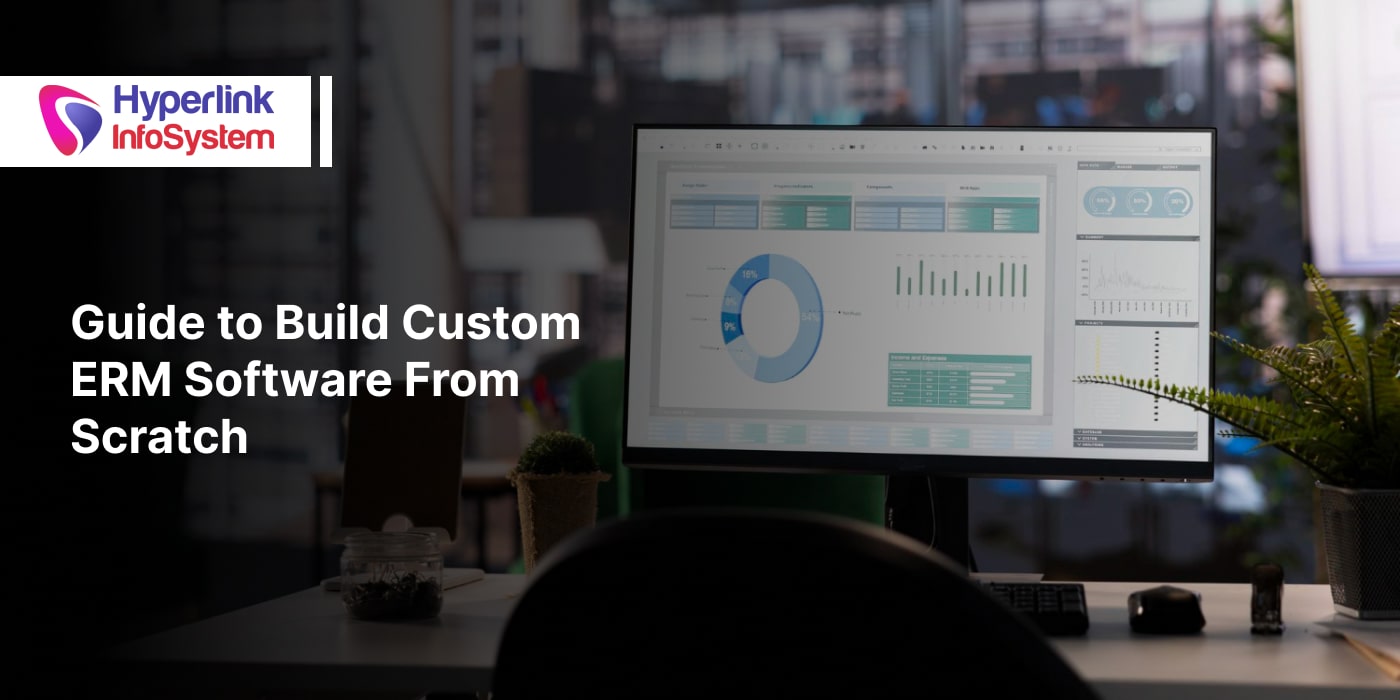From Payments to Profits - Extended Tutorial on Monoova Payment Gateway Integration
May 2025

Customers expect smooth and cashless transactions in 2025. Most people use their smartphones to make payments, but the ever-looming threat of cyber fraud and strict regulations can be a headache. Payment gateway integrations emerge as a savior because they allow customers to make payments easily while ensuring the security of their financial data. The global payment gateway market is projected to reach $161 billion by 2032.
However, poorly designed APIs, versioning issues, or server failures can ruin the experience. A payment gateway crash is the worst thing that could happen to a business, especially during peak revenue periods. The solution lies in integrating a robust payment API like the Monoova payment gateway.
Most businesses are familiar with payment gateway integrations and their benefits. How is Monoova payment gateway different from others? Monoova is a merchant-centric platform with integrations for payments, marketing, loyalty programs, and customer insights. No doubt, Monoova payment gateway is an all-in-one platform for businesses, but the process can be complicated.
The blog is a detailed guide to Moonova payment gateway integration. Also, we will discuss its pros, cons, challenges, and more. Let's dive into the details.
What is the Moonova Payment Gateway?
Monoova is an Australian-based payment service provider. It provides standardized APIs that companies can integrate, but it also supports bespoke configurations and solutions to meet companies’ diverse needs. These powerful APIs enable businesses to seamlessly receive, disburse, and manage funds while allowing them to choose from different payment methods.
Monoova’s real-time NPP (new payments platform) methods include PayID and PayTo. On the other hand, it also provides support for traditional payment methods such as BPAY, direct entry, card payment, and FX services.
How Does Moonova Payment Gateway Work?
- PayID - Eliminates the need to share traditional bank account numbers. Users can make payments instantly using simple identifiers such as emails or phone numbers.
- PayTo - Advanced payment method wherein businesses can only receive funds after the customer approves the digital agreement (applicable to one-time purchases and subscriptions).
- Automated Payment Reconciliation - This feature automatically matches incoming and outgoing payments with their respective accounts, transactions, or invoices in real-time (regardless of their volumes). Reduces 99% of manual work.
Businesses, regardless of their sector, can use the Monoova payments platform to process massive transaction volumes in real-time without any hassles. Considering Monoova payment gateway integration for your business? Hire dedicated resources with the relevant skills and experience.
6 Main Features of Monoova Payment Gateway APIs
Below are the top 6 features of Monoova payment gateway APIs.
- Powerful Payment Capabilities
Monoova’s APIs support and simplify transactions, and make it easy for people to send and receive money. It supports transactions conducted via direct debits/credits, BPAY, New Payments Platform (NPP), and cards.
- Real-Time Processing
Supports real-time fund transfers and reconciliation. Parties don’t have to wait endless hours for transactions to complete. At the same time, it eliminates the need to manually check and match payments.
- Sandbox Environment
The sandbox environment is an experimental zone for developers to test and integrate their APIs using simulated data without affecting the live environment. Once the company completes the integration and compliance procedures, it gets access to the live environment.
- Automated Reconciliation
With innovative features like Automatcher, the Monoova payment gateway API ensures automated reconciliation. It assigns unique virtual accounts or PayIDs to users, making it easier to track incoming payments.
- Webhooks and Notifications
Every time a transaction occurs, Monoova sends real-time, automated messages called webhooks to the system, ensuring users get timely updates on transactions.
- Security and Compliance
Uses secure authentication methods such as API keys and tokens. These measures ensure that only verified developers or systems can access Monoova’s payment gateway, ensuring data security and privacy.
Want to know more about Monoova payment gateway integration? Consult a reputed mobile app development company.
Conditions to Fulfil Before Performing Monoova Payment Gateway Integration
Before performing the Monoova payment gateway integration, users must complete a set of steps and tasks. Only after completing these steps can they proceed to the integration process. Here are the prerequisite steps to follow before commencing Monoova payment gateway integration.
- mAccount Configuration : Ensure that the mAccount within the Monoova platform is configured properly and has the necessary permissions.
- API Keys and Credentials : Obtain access to API keys, usernames, and passwords to the mAccount.
- Download and Install the SDK : Download the relevant SDK and install it within the development environment.
- Clone the Merchant SDK Repository : Clone the merchant SDK repository, which has the necessary tools and resources for initiating Monoova sessions.
- Read and Comprehend Documentation : Read and understand the Monoova API documentation, which has examples explaining how to use APIs and integrate them into the app.
- Test in Sandbox : Use the sandbox environment to test the effectiveness of the integration. It won’t affect the actual financial transactions or production systems.
- Regulatory Compliance : The integration must comply with relevant regulations and standards, such as PCI DSS.
Which payment gateway is the best to integrate for your business? Consult a reputed mobile app development company for detailed guidance.
4-Step Process to Perform Monoova Payment Gateway Integration
After completing the prerequisite steps for Monoova payment gateway integration, it is time to proceed to the actual process. Below are the steps for the same.
1) Account Setup and API
- Create a Merchant Account - Register with Monoova and create a merchant account.
- Get API Keys - Monoova will provide the necessary API keys for the merchant account post-registration.
- Access API Documentation - Refer to the Monoova API documentation, which provides information about API endpoints and how to use them.
2) Integration with the App
- Identify Business Needs - Determine the payment methods and features required for the application.
- Select the Right Payment Gateway - Consider whether the business requires a direct post method or a hosted checkout page.
- Implement API Calls - Integrate the Monoova API into the app’s code for effective transaction processing.
- Secure Data Handling - Follow best practices and necessary steps to ensure that the app handles confidential payment data securely while complying with PCI standards.
3) Testing and Deployment
- Sandbox Testing - Rigorous testing in the sandbox environment is necessary to ensure it works properly after launch.
- Payment Setting Configuration - Navigate to the merchant account dashboard and set up the desired method for payment processing.
- Checkout Customization (Optional) - Personalize the checkout options if necessary.
- Implement Security Measures - The integration must include the necessary security measures to offer protection against fraud and online threats.
- Testing and Deployment - Conduct rigorous testing and deploy the integration to production.
- Transaction Status - Implement the necessary logic to retrieve transaction status updates from Monoova.
4) Additional Considerations
- Onboarding and Support - For onboarding and support, capitalize on Monoova's API documentation. Don’t hesitate to contact their customer support if you need guidance during the integration process.
- Legal Compliance - Keep legal compliance in mind. Make sure that the integration follows relevant laws and regulations.
- Customer Experience - Prioritize customer experience by delivering a smooth and user-friendly checkout experience.
7 Benefits of Monoova API Integration
Below are some of the most notable benefits of Monoova API integration.
1) Real-Time Payments (NPP Support)
- Benefits - Supports Australia’s New Payments Platform (NPP), enabling quick payments without any delay.
- Impact - Faster settlements and improved cash flow for businesses and their clients.
2) Virtual Account Infrastructure
- Benefit - Assigns a unique virtual account to customers.
- Impact - Simplifies the reconciliation process by automatically linking payments to the right customer account or invoice.
3) Automated Reconciliation
- Benefit - Facilitates automatic transaction matching using virtual accounts and metadata.
- Impact - Reduces manual work and errors, boosting operational efficiency.
4) API-First Architecture
- Benefit - Designed for easy programmatic access and integration.
- Impact - Offers greater flexibility for customer workflows and smooth integration into existing systems.
5) Scalability
- Benefit - Created to handle massive transaction volumes.
- Impact - Perfect for growing companies and fintech platforms.
6) Compliance and Security
- Benefit - Conforms to Australian regulatory standards (AFSL, KYC/AML).
- Impact - Reduces compliance burden and fosters trust.
7) 24/7 Payment Processing
- Benefit - Leverages NPP for 24/7 payment processing.
- Impact - Reduced delays in payment increase customer satisfaction.
5 Cons of Monoova API Integration
Below are some of the cons of Monoova API integration.
1) Complex Onboarding and Compliance
- Challenge - Requires KYB, AML, and custom compliance processes.
- Impact - May result in sluggish interaction and require legal/operational resources.
2) Limited Reach
- Challenge - Focuses mainly on the Australian market.
- Impact - Not particularly suited for companies requiring international and unconventional support.
3) Technical Integration Efforts
- Challenge - Developer team needs to devote time and resources to build and maintain the integration.
- Impact - Time-consuming and resource-intensive for startups, non-technical individuals.
4) Pricing Transparency
- Challenge - No standard pricing, it depends on client to client and integration requirements.
- Impact - Cost estimation becomes difficult. Sales or consultation becomes necessary.
5) Third-Party Infrastructure Dependence
- Challenge - Relies on banks and payment rails like NPP and BECS.
- Impact - Performance or outages in underlying systems could hamper operations.
Need help navigating Monoova's payment gateway integration for your current project? Consider dedicated developers for hire in India who work as per your time zone without sacrificing quality.
7 Monoova API Integration Challenges and Their Solutions
Integration with the Monoova payments platform is beneficial, but it has its share of challenges. We will share the challenges and their solutions in this section.
1) Complex Documentation Navigation
Challenge - Understanding and locating API endpoints can be complicated for many.
Solution:
- Monoova’s API reference guide and sandbox environment can be of immense help.
- Consult Monoova’s technical team to get timely support.
2) Authentication and Security Handling
Challenge - Managing secure API keys and OAuth credentials.
Solution:
- Implement secure storage (for example, environment variables, vaults).
- Ensure strict adherence to Monoova’s recommended authentication flow.
3) Webhook Management
Challenge - Handling real-time event notifications.
Solution:
- Set up retry mechanisms and logging for webhook listeners.
- Validate payloads using proven signatures.
4) Data Format and Validation Errors
Challenge - Incorrect JSON structure or missing fields.
Solution:
- Use sample payloads and schema validators.
- Conduct thorough testing in Monoova’s sandbox before launch.
5) Banking and Regulatory Compliance
Challenge - Integration must align with compliance regulations and KYC/AML policies.
Solution:
- Include compliance teams during the initial stages.
- Use Monoova’s inherent compliance tools wherever necessary.
6) Handling High Transaction Volumes
Challenge - Performance issues with batch processing and concurrent requests.
Solution:
- Use Monoova’s batch APIs efficiently.
- Implement rate limiting and error retries.
7) Environment Synchronization (Sandbox vs. Production)
Challenge - Differences in test and live environments
Solution:
- Ensure consistency in configurations.
- Verify each configuration in the sandbox with real-time data before switching.
Monoova API Vs. Traditional Payment Gateway Integration
Below is a table-wise comparison between Monoova API and traditional payment gateway integration.
|
Feature |
Monoova Payment Integration |
Traditional Payment Gateway Integration |
|
Payment Methods Supported |
Real-time (PayID, PayTo), Direct Entry, BPAY, Card, FX |
Mostly supports cards, also supports Direct Entry of BPAY |
|
Real-Time Payments |
Fully supported via NPP rails (PayID, PayTo) |
Generally not supported or delayed |
|
Reconcilation |
Automated, real-time reconciliation |
Mostly manual or semi-automated |
|
Flexibility |
Highly customizable through APIs |
Limited customization, pre-defined workflows |
|
Onboarding Experience |
API-first, quick integration for developers |
Often requires manual setup and multiple vendor contacts |
|
Security and Fraud Prevention |
High security with PayID reduces data sharing. PayTo requires digital authorization |
Focused on card fraud, limited innovation for real-time protection |
|
Use Case Scalability |
Perfect for high-volume, complex, recurring, or real-time payments |
Best suited for one-off card transactions |
|
International Use |
Overseas businesses can also access Australian payment rails |
Focuses mainly on domestic card processing |
|
Settlement Speed |
Instant for PayID and PayTo |
Delayed (mostly T+1 or longer) |
|
Regulatory Compliance |
Designed to comply with AU payment standards |
Depends on the provider, often focused on the card scheme rules |
|
Recurring Payments |
Supported via PayTo with real-time confirmation |
Requires tokenization or traditional direct debit |
|
Operational Efficiency |
Reduces manual tasks by up to 99% |
Higher manual intervention and reconciliation efforts |
Monoova API Integration - Which Businesses Benefit the Most?
In the above sections, we covered the Monoova API integration steps, pros, cons, and challenges. Now, we will explore the businesses that can benefit the most from Monoova API integration.
1) Payment Platforms and Fintechs
- Reason - Automates and streamlines complex payment flows, reconciliation, and real-time settlements.
- Use Case - Offers payment services to third parties (for instance, wallets and remittance platforms).
2) E-Commerce and Marketplaces
- Reason - For efficient management of buyer-seller payouts, refunds, and mass-scale reconciliations.
- Use Case - Platforms like multi-vendor marketplaces require split payments and automated disbursements.
3) Payroll and Workforce Platforms
- Reason - For automated payroll disbursements, contractor payments, and ensuring compliance.
- Use Case - HR tech platforms or gig economy apps like Rideshare or freelance job portals.
4) Lenders & Financial Services
- Reason - Helpful in loan disbursement and collection, along with real-time collection and reporting.
- Use Case - Buy Now Pay Later (BNPL), micro-lenders, and neobanks.
5) Enterprise Companies
- Reason - Automates accounts payable/receivable, improves cash flow visibility, and reduces manual reconciliation.
- Use Case - Large enterprises and corporations that manage hundreds to thousands of transactions daily.
6) Subscription and Billing Platforms
- Reason - Automated recurring billing, direct debit management, and real-time status updates.
- Use Case - SaaS platforms, membership-based services, or utilities.
Do you need help with Monoova payment gateway integration for your business? Hire app developers with relevant experience and knowledge.
Concluding Thoughts
Monoova payment gateway integration is the perfect solution for companies that don’t want to settle for the ordinary. Transcending traditional payment gateway APIs, the Monoova payments platform offers end-to-end payment automation and infrastructure-level control. It stands out with innovative features such as the following-
- Built-In Compliance and Reporting Tools
- End-to-End Payment Automation
- Virtual Account Infrastructure
- Real-Time Payments Via NPP and PayTo
- Auto-Reconciliation and Smart Workflows
Are you looking to streamline, scale, and modernize your payment infrastructure? If the answer is yes, then Monoova payment gateway integration is the right solution for your business. Besides the advanced features mentioned above, Monoova API provides robust support for multiple payment rails such as PayID, BPAY and Direct Entry. Whether it's fintech, e-Commerce, lending platforms, or payroll services, companies can tailor the Monoova API to suit their unique needs.
That said, integrating the Monoova API with your system, payment rails, or platform requires significant effort, technical expertise, and a profound knowledge of business workflows. Not every business has access to these resources. Hyperlink InfoSystem is an esteemed app development company that can help you break through these barriers and be successful.
With 12+ years of industry experience in custom app development and a comprehensive knowledge of API integrations, we can help you develop, implement, and optimize a payment gateway platform engineered to overcome your specific business challenges. Being one of the top mobile app development companies in India, we have accomplished over 3000+ projects while handling the entire process from initiating scoping to launch.
Achieving transparency, speed, and total control over options is no longer a dream. With the right guidance and technical support, you can make it happen. Speak to one of our experts to see what we can do for you.
Frequently Asked Questions
Monoova supports bank transfers via NPP (New Payments Platform), PayID, BSB/Account, BPAY, and Direct Entry for domestic AUD transactions.
Yes, companies can automate payment reconciliation using Monoova. With Monoova, companies can issue unique Virtual Account Numbers (VAN), PayID, or BPAY references to each customer. When customers make a payment using the unique number, Monoova automatically links the funds to the appropriate customer. This automated reconciliation eliminates manual errors, saves time, and ensures that the information is updated in real-time.
The answer is yes. Monoova’s API supports batch payment files, which enables companies to initiate large-scale payments, and that too with a single API request. Individuals can upload a batch with multiple recipient details. Monoova will validate, process, and track each payment with razor-sharp accuracy. Real-time status updates are available via webhook or API.
In most cases, clients complete the integration in two to four weeks and go live. With resources such as Swagger documentation, sandbox environments, and solution architects, they can speed up the integration process. Furthermore, some clients with access to dedicated dev resources can complete the integration in less than a week.
Monoova’s pricing depends on the particular details and characteristics of a business, such as transaction volume, geographical areas where it conducts activities, and the type of services used. Generally, Monoova can be more expensive than other payment gateway integrations for companies with massive transaction volumes or located in countries with high processing fees.
Latest Blogs

Is BlockChain Technology Worth The H ...
Unfolds The Revolutionary & Versatility Of Blockchain Technology ...


IoT Technology - A Future In Making ...
Everything You Need To Know About IoT Technology ...

Feel Free to Contact Us!
We would be happy to hear from you, please fill in the form below or mail us your requirements on info@hyperlinkinfosystem.com
Hyperlink InfoSystem Bring Transformation For Global Businesses
Starting from listening to your business problems to delivering accurate solutions; we make sure to follow industry-specific standards and combine them with our technical knowledge, development expertise, and extensive research.
4500+
Apps Developed
1200+
Developers
2200+
Websites Designed
140+
Games Developed
120+
AI & IoT Solutions
2700+
Happy Clients
120+
Salesforce Solutions

40+
Data Science

















